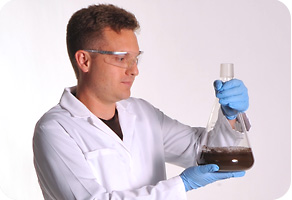Dioxin Testing
 ALS - Columbia offers expertise in high resolutions analyses for dioxin and dioxin-like compounds, polyaromatic hydrocarbons (PAHs), polychlorinated biphenyls (PCBs) congeners, and polybrominated diphenyl ethers (PDBEs), among other analyes. Our 12,099 square foot laboratory features five sophisticated high resolution gas chromatograph/high resolution mass spectrometers (HRGC/HRMS) to perform high
ALS - Columbia offers expertise in high resolutions analyses for dioxin and dioxin-like compounds, polyaromatic hydrocarbons (PAHs), polychlorinated biphenyls (PCBs) congeners, and polybrominated diphenyl ethers (PDBEs), among other analyes. Our 12,099 square foot laboratory features five sophisticated high resolution gas chromatograph/high resolution mass spectrometers (HRGC/HRMS) to perform high
resolution testing on a variety of matrices including, but not limited to: food products, sediments, animal tissues, water, soil, air, waste, household dust and building products.
High Resolution Mass Spectrometers
Our specialized laboratory equipment achieves 10-100 times lower detection limits than older instruments and is among the most sensitive in the industry. The HRGC/HRMS are an optimal choice for ultra low-level trace detection applications such as the analysis of dioxins, furans, PAHs, PCB congeners and PBDEs.
The high resolution laboratory maintains a variety of certifications and accreditations with federal and state agencies and regulatory programs. Under the current NELAC program, we are able to perform high resolution testing services in most states for air, water, wastewater, solid, and hazardous waste.
The following table gives the various analytical methods performed and the regulatory program to which they are typically associated.
| METHODS | REGULATORY PROGRAM |
|---|---|
| EPA 23 | MACT, CAA |
| EPA TO9 | CAA |
| EPA 1613B | CWA, FDA, NPDES |
| EPA 8280A | RCRA, CERCLA |
| EPA 8290 | RCRA, CERCLA |
| EPA 1668A | RCRA, CERCLA |
| CARB 429 | California Air Resources Board |
Analytic methods performed and the corresponding regulatory program.
ALS - Columbia offers a range of electronic data deliverables (EDD). We generate a number of Department of Defense (Army, Navy, Air Force) deliverable formats to support data transfer into large relational database management systems. We also work closely with our commercial clients to produce electronic data formats compatible with their systems. We support more than 70 different EDD formats. Results are routinely emailed to clients in PDF format. Full data packages can be provided on CD.
Our high resolution analyses include, but are not limited to:
EPA Method 8290: A HRGC/HRMS method that is appropriate to determine the concentrations of 17 tetra-, penta-, hexa-, hepta- and octachlorinateddibenzo-p-dioxins (PCDDs) and dibenzofurans (PCDFs) in chemical wastes, soil/sediment, tissues and water. This method is used for projects that demonstrate compliance with RCRA regulations where low detection limits are required.
EPA Method 1613B: A HRGC/HRMS method that is used to determine 2,3,7,8-tetrachloro dibenzo-p-dioxin (TCDD) in municipal and industrial discharges as provided under 40 CFR 136.1 and NPDES regulations. It is also used to determine PCDDs and PCDFs in water, soils, sludges and other matrices associated with CWA, RCRA and CERCLA. Specificity is provided for determination of the seventeen 2,3,7,8-substituted PCDs and PCDFs. This method is indicated for the analysis of drinking water. It is also used for the analysis of food products and human/animal tissue samples.
EPA Method 8280A: This is a less sensitive, high resolution GC and low resolution MS, method that is appropriate for the determination of PCDDs and PCDFs in chemical wastes, soil/sediment, tissues and water. This method is used for projects seeking compliance with RCRA regulations where very low detection limits are not required.
EPA Method 23: A HRGC/HRMS Methods that quantifies PCDDs and PCDFs for stationary sources. A sample is collected from a gas stream through a glass trap with adsorbent XAD resin. These traps must be pre-cleaned and spiked with PCDD-PCDF labeled standards prior to sample collection.
EPA Method 1668A: This HRGC/HRMS method is for congener specific polychlorinated biphenyls (PCBs). The PCB congeners that can be determined by this method are the 12 congeners that are designated as toxic by the World Health Organization (WHO) plus an additional 197 congeners. Of these 197 congeners, approximately 70 co-elute and are reported as mixtures.
CARB 429: This is a method that uses isotope dilution HRGC/HRMS to analyze for 19 PAHs in emissions from stationary sources. Only the total amounts of each PAH in the stack emissions can be determined with this method.